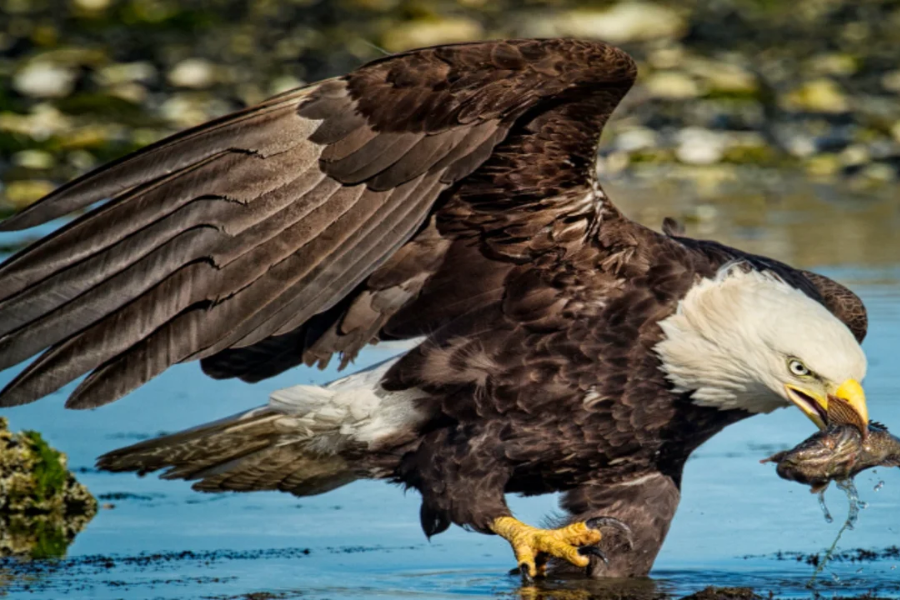The “Hancock bird” phenomenon represents a fascinating intersection of cultural significance, environmental urgency, and breathtaking natural beauty. This term doesn’t refer to a single species but rather encompasses a range of avian species, each with unique characteristics and behaviors. It highlights their vital roles within ecosystems and their symbolic meanings in human cultures.
In this article, we delve into the essence of the Hancock bird phenomenon through the lens of the E-A-T framework—Expertise, Authoritativeness, and Trustworthiness. Our aim is to offer content that is not only engaging but also backed by authoritative insights and reliable information.
Avian Conservation Efforts and the Hancock Legacy
The Foundation’s Mission and Impact
David Hancock stands as a trailblazer in avian conservation, having co-founded the Hancock Wildlife Foundation with a clear mission to protect and preserve bald eagles and other endangered bird species. The Foundation has made significant strides in raising awareness about the importance of conservation efforts. By leveraging modern technology, such as live streaming wildlife cameras, the Foundation has not only emphasized the urgent need for bird conservation but has also brought the captivating beauty of these majestic creatures into homes worldwide. This innovative approach fosters a deeper connection between people and wildlife, furthering the impact of conservation efforts on a global scale.
Innovative Conservation Strategies
Our approach to interacting with and protecting avian species has been revolutionized by cutting-edge innovations in wildlife conservation, particularly those pioneered by the Hancock Wildlife Foundation. These advanced technologies have fostered a unique connection between people and birds by providing intimate glimpses into their daily lives. By showcasing personal moments of avian behavior, these innovations inspire and motivate individuals to engage in conservation efforts and spread awareness. Through this engaging technology, we not only protect but also deepen our appreciation for the delicate beauty and complexity of bird life.
Biodiversity and Habitat Preservation
At the heart of bird conservation lies the crucial task of safeguarding biodiversity and preserving essential habitats. The Hancock Wildlife Foundation underscores the importance of protecting the natural environments that birds depend on for their survival. By focusing on habitat conservation, the Foundation ensures that these ecosystems remain intact, supporting not only the avian species but also the overall health of our planet. This commitment to preserving critical habitats is vital for maintaining ecological balance and ensuring that future generations can continue to enjoy and learn from the diverse birdlife that enriches our world.
Community Involvement and Education
Central to our conservation strategy is the active involvement of communities through participation and education. The Hancock Wildlife Foundation is dedicated to fostering environmental stewardship and social responsibility by engaging the public in conservation efforts. Through educational initiatives, the Foundation highlights the importance of protecting wildlife and encourages individuals to take meaningful actions. By equipping people with knowledge and resources, we aim to build a collective commitment to conservation that extends beyond awareness, driving positive change and ensuring that everyone can contribute to the preservation of our avian friends and their habitats.
The Cultural and Spiritual Resonance of Birds
Birds in Folklore and Storytelling
Birds hold a profound place in the folklore and storytelling traditions of cultures around the world, symbolizing qualities such as independence, perseverance, love, and transcendence. These avian symbols have been celebrated throughout history, enriching narratives and legends. The concept of the “Hancock bird” invites us to explore and honor these cultural traditions, deepening our understanding of birds’ mythical and historical significance across various societies.
Spiritual Symbolism and Human Connection
Through the lens of the Hancock bird phenomenon, we gain insight into the spiritual importance of birds and their deep connection to humanity. Many cultures perceive birds as messengers from the divine, bridging the gap between the spiritual and the earthly realms. They are seen as harbingers of harmony, linking humans with the natural world and offering a sense of spiritual transcendence.
Birdwatching: A Window to the Natural World
Birdwatching serves as a vital way to engage with the Hancock bird concept, offering a direct connection to the marvels of nature. This practice not only cultivates patience and keen observation but also fosters a deeper appreciation for the complexities of the natural world. Through birdwatching, we strengthen our bond with nature and gain a greater understanding of the intricate interactions between avian life and their environments.
Technology’s Role in Bird Conservation and Engagement
The Impact of Live Streaming Cameras
Live streaming wildlife cameras have revolutionized the way we interact with the environment by bringing the intricate details of bird life directly into our homes. This technology not only enhances public education by providing real-time insights into avian behaviors but also fosters a global community of conservationists united by a shared passion for protecting birds. By making the everyday lives of birds visible and accessible, live streaming cameras play a crucial role in raising awareness and generating support for conservation efforts.
Innovations in Birdwatching
Technological advancements have significantly transformed birdwatching, making it more accessible and engaging than ever before. Innovations such as species identification apps and online platforms have greatly enhanced our ability to study and conserve avian species. These tools facilitate accurate bird identification, track migration patterns, and connect birdwatchers from around the world. By integrating technology into birdwatching, we not only improve our understanding of bird species but also strengthen global collaboration in conservation efforts.
David Hancock and His Enduring Influence
A Legacy of Conservation
David Hancock’s impact on wildlife protection is both profound and enduring. His lifelong passion for birds and unwavering commitment to their preservation have inspired countless individuals to become environmental advocates and outdoor enthusiasts. Hancock’s legacy lives on through the many conservationists and nature lovers he has influenced.
The Hancock Philosophy
Central to David Hancock’s work is a deep reverence for the natural world and a steadfast dedication to environmental preservation. His philosophy, embodied in the “Hancock bird” concept, serves as a guiding principle for those who cherish nature. Hancock’s approach exemplifies the importance of respecting and protecting our natural environment.
Ecosystem Roles of Birds
Birds play a crucial role in maintaining healthy ecosystems. Their presence helps sustain the natural balance, highlighting the interdependence of all living organisms. Understanding the essential functions of birds in ecosystems underscores their significance and the need for their protection.
Pollinators and Seed Dispersers
Many bird species contribute to plant reproduction and forest regeneration by pollinating flowers and dispersing seeds. As they collect nectar or consume fruits, they facilitate the spread of plant life, which is vital for maintaining diverse and thriving habitats.
Pest Control Agents
Birds, including owls, hawks, and even smaller species like swallows, are natural pest controllers. By preying on insects and rodents, they help manage pest populations, contributing to agricultural health and ecosystem balance.
Indicators of Environmental Health
Birds serve as indicators of environmental health. Changes in bird populations can signal shifts in habitat quality, pollution levels, and the effects of climate change. Monitoring bird behavior and numbers provides valuable insights for conservation efforts.
Wildlife Conservation Technology
Technological advancements have opened new avenues for public involvement, education, and research in wildlife conservation. These innovations enhance our ability to protect bird populations and their habitats.
Remote Monitoring and Data Collection
Technologies like satellite tracking and remote sensing provide crucial data on bird migration patterns, nesting sites, and habitat use. This information is essential for targeted conservation efforts and habitat protection.
Public Engagement and Education
Interactive apps, virtual tours, and live feeds offer new ways for the public to connect with wildlife. These tools are crucial for fostering a global conservation mindset and encouraging active participation in protecting avian species.
Conservation Storytelling
Storytelling is a powerful tool in conservation, helping to garner support for avian protection by sharing the stories of birds—their struggles, triumphs, and significance.
Narratives of Success and Challenge
Sharing success stories of species recovery can inspire communities and individuals to support conservation efforts. Highlighting the challenges faced by birds due to pollution, climate change, and habitat loss emphasizes the urgency of conservation work.
The Role of Media in Conservation
Media outlets play a vital role in spreading conservation messages and generating public interest in bird protection. Interactive websites, social media campaigns, and documentaries bring the stories of birds and their conservation to a broader audience.
Engaging Communities in Conservation
The effectiveness of conservation initiatives relies on active community involvement. Engaging local populations in bird habitat and species preservation fosters a personal investment in conservation efforts, increasing their chances of long-term success.
Local Stewardship Programs
Educational programs and citizen science projects that promote local stewardship empower communities to actively participate in conservation. These initiatives enhance local biodiversity and contribute to global bird conservation efforts.
Volunteer and Citizen Science Opportunities
Volunteering and citizen science projects provide individuals with opportunities to contribute to bird conservation while deepening their connection to nature. These efforts support research and conservation initiatives, benefiting both the environment and the participants.
Cultural and Spiritual Connections to Birds
Birds hold profound cultural and spiritual significance beyond their ecological roles. These connections highlight the importance of birds in both natural and human contexts.
Birds in Literature and Art
Birds have long been symbols of freedom, grace, and spiritual ascent in art and literature. Their depiction enriches our cultural heritage and reflects their enduring significance in human expression.
Spiritual Significance Across Cultures
In many cultures, birds are seen as symbols of the soul, deities, or ancestral spirits, acting as messengers between the earthly and spiritual realms. This spiritual significance underscores the deep, inherent value of birds to human communities worldwide.
Frequently Asked Questions
What is the Hancock bird concept?
The Hancock bird concept refers to the distinctive characteristics, ecological roles, and cultural significance of birds, inspired by David Hancock’s work and philosophy. It highlights the importance of avian conservation and the broader impact of birds on ecosystems and human societies.
How does birdwatching contribute to conservation?
Birdwatching plays a vital role in conservation by increasing awareness about bird species and their habitats. It fosters a personal connection with wildlife, motivating individuals to engage in and support conservation efforts.
What role do birds play in ecosystems?
Birds are essential to ecosystem health, performing critical functions such as pollination, seed dispersal, and pest control. Their presence helps maintain ecological balance and supports the overall functionality of natural systems.
How can technology aid in bird conservation?
Technology contributes to bird conservation through tools like live streaming cameras and bird identification apps. These innovations enhance public engagement and education, making it easier to monitor avian populations and support conservation efforts.
How can I get involved in bird conservation?
You can get involved in bird conservation by supporting organizations dedicated to wildlife protection, participating in citizen science projects, and educating others about the importance of avian preservation. Every effort helps in safeguarding bird species and their habitats.
Conclusion
Exploring the Hancock bird concept reveals a rich interplay of ecological significance, cultural depth, and conservation urgency. By examining birds’ roles in ecosystems, the impact of technology on conservation, the power of storytelling, community engagement strategies, and the cultural and spiritual connections humans have with birds, we gain a holistic understanding of their importance. This comprehensive perspective underscores the value of birds and emphasizes the need for ongoing, collaborative efforts to protect these extraordinary creatures and their environments.
“Explore captivating insights and detailed features on diverse topics at BuzzDiscovers.com.”











